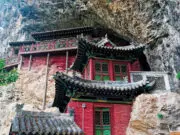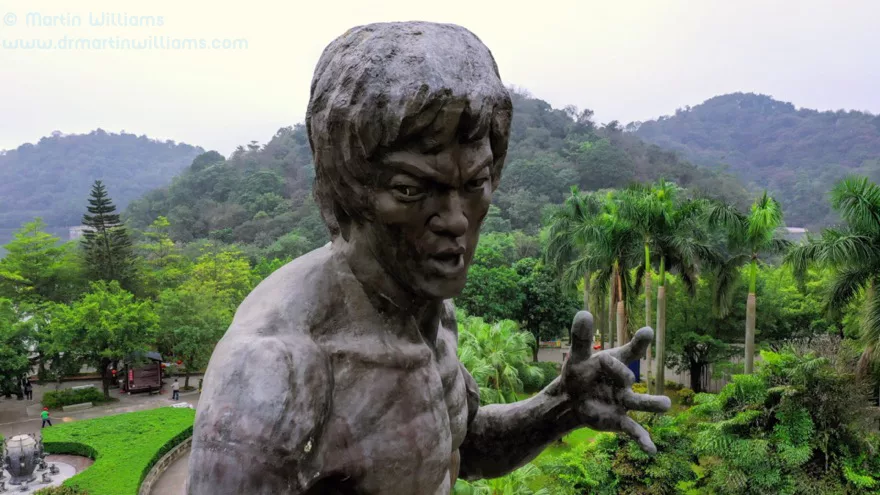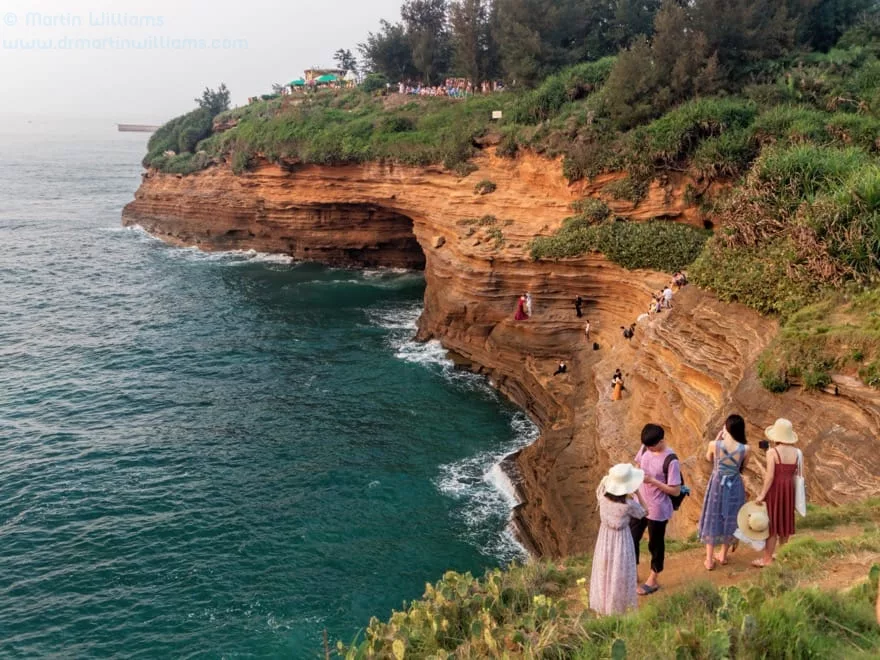With a broad river surging through a valley that’s in places like a canyon, hemmed in by sandstone cliffs on either side, and little vegetation but swarthy conifers, shrubs and grass, the landscape we’re driving through might be in a place like Arizona. Yet this is Qinghai province, China, high in the eastern Himalayas. The river is the upper Mekong, known here as the Lancang, and this area was formerly within Kham, the southeastern third of Tibet.
The gravel road turns to follow a tributary of the river, passes more sandstone cliffs, and starts climbing towards higher mountains beyond.
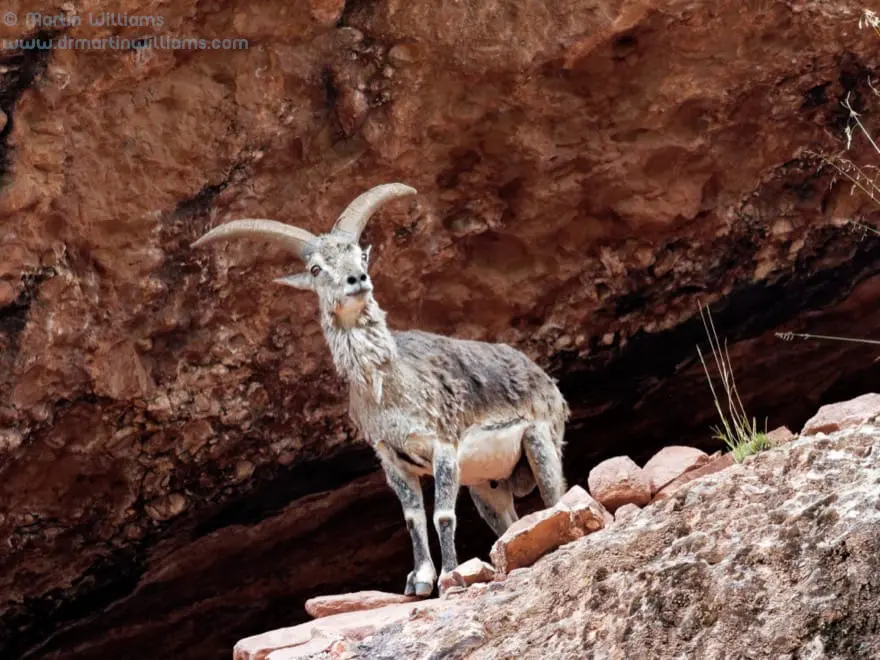
“Goats!” my son shouts, and the car stops so my wife, son and I can watch around a dozen goats that are traversing a cliff by the road. These are not farm goats, but wild animals unique to higher reaches of the Tibetan plateau, and are typically called blue sheep. Seeing them just a hundred metres away, we can readily tell they’re not blue, but grey-brown above, light grey below. They clamber down and across almost sheer stretches of rock face; watched over by a ram with an imposing pair of horns.
Though mainly used in battles to determine which ram dominates a herd, the horns can also prove useful in defending against predators, which here include the “grey ghost” of the Himalayas – the snow leopard.
Inhabiting mountains from the Himalayas north to Mongolia, the shy, enigmatic snow leopard has until recently been so elusive that willdife lovers could only dream of seeing one. Yet now a few places offer visitors the chance of a sighting, and perhaps the best of these is here in Qinghai. With “typical” leopard, lynx, Chinese mountain cat and Pallas’ cat also present, this area along the Lancang has been dubbed the Valley of the Cats, site of a pioneering conservation project within China’s first pilot national park.
The project centres on a community-based tourism initiative that was launched last year, after 22 familes received training in how to host visitors, and take them on outings to explore the area.
While the Valley of the Cats lies 2000km northwest of Hong Kong – around the same distance as Beijing, we’ve taken a somehat roundabout route to get here. This is partly because after arriving in Qinghai’s capital, Xining, we spent two days in nearby highlands, to explore an area including the shores of Qinghai Lake, which is akin to an inland sea, and hopefully adapt a little to the altitude.
Mountainous Yushu Prefecture
Then, a flight into mountainous Yush Prefecture, where the plane dipped between ranks of rugged peaks, and landed on the single runway in a grassy valley. We were met by two young men – both Tibetans, like most people in Yushu – and squeezed our luggage into a car, ready for the day’s drive to the Valley of the Cats.
The journey followed a highway with upland scenery the whole way, punctuated by stops to photograph sights like vultures gathered on a hillside, a grand Tibetan monastery at the foot of a mountainside, and a gorge where cliffs were painted with colourful Bhddha images and Tibetan characters. Reaching a village by the Lancang, we were greeted by the head of our host family, then started up the gravel road alongside the Lancang River.
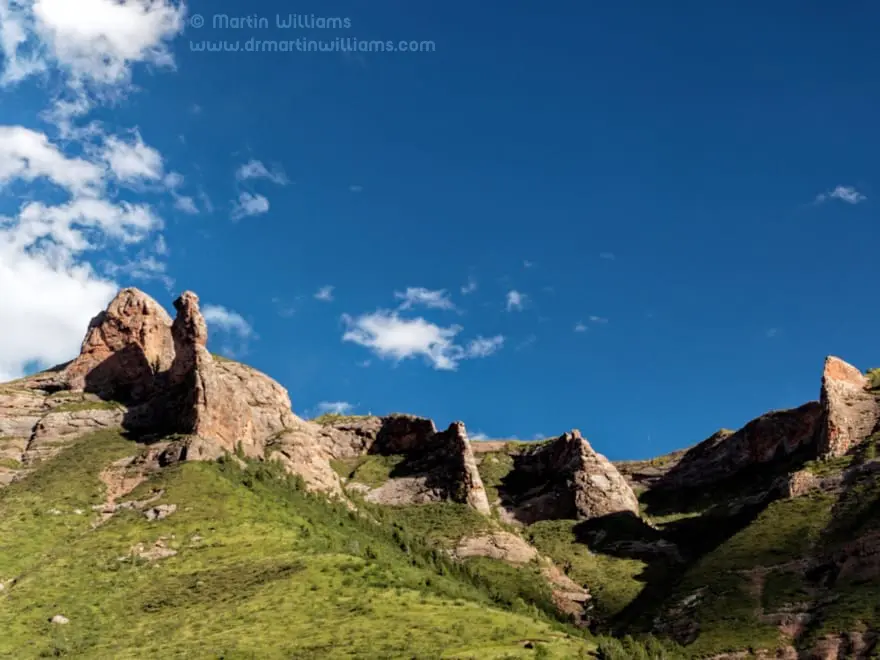
“Wow!” said my wife, as the road climbed and revealed a view of the Lancang and the hills. We stopped, took photos, continued, only to stop again several times as the “Wow!” scenery moments continued.
At last, we turned a short way up a dirt track to a grassy field, and halted not by the family house, as I expected, but outside two big white tents, where it turned out we’d be staying. These comprised the summer home of the family, newly pitched on grass maybe a couple of hundred metres from their house, as they began a couple of months camping because they love the outdoors when it’s warm. Camping unlike any I’d ever done, though – with the main tent holding furniture like wooden sofas, bed, freezer and cupboards, plus a big metal stove with chimney for carrying away smoke from burning yak dung.
“Hello! Hello! Hello!” chorused two girls in white frocks. Barely bigger than toddlers, they were the youngest family members. One of two sisters in their late teens was inside cooking; the other would return later after herding the family’s yaks, while riding a motorbike rather than on horseback. During our stay, we found the mother was somewhat reserved, overseeing household operations, while the father – who had greeted us, and followed us in his pickup, was in overall charge. Our driver was his brother, or maybe cousin; while the other man who met us up at the airport had been roped in to translate from my simple Mandarin, as many locals only know Tibetan, and proved to be a bit of a dandy, even wearing a facemask to protect from sun damage.
Dinner soon followed, centering on chunks of yak meat, with yoghurt made from yak milk, flat bread, plus vegetables and rice bought in a village store.
While there are wild animals close by – just the month before, a brown bear broke into a neighbour’s house, the best way of watching wildlife in the Valley of the Cats is by taking safari-style excursions up alongside the Lancang tributaries.
Expansive landscape, bone-crunching Lammergeiers
Our close encounter with blue sheep was a highlight of our first foray, and the next day we are out before dawn, crossing a bridge over the Lancang, then passing sparse trees in a ravine, and climbing to reach a land above the treeline.
The rock is different here, forming expansive hillsides with grassy pastures, interspersed with cliffs and crags that in places are arrayed in gigantic tooth-like pinnacles. Knowing this is snow leopard country, we scan slopes and cliffs, finding more blue sheep but no snow leopards.
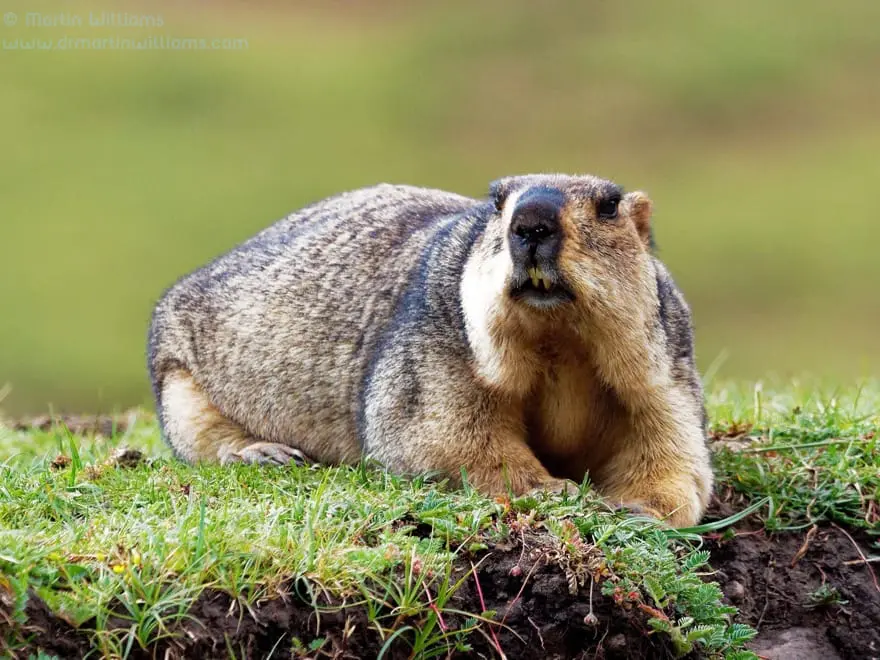
At daybreak, the temperature must be around freezing, but the sun soon warms the valley, encouraging marmots to emerge from their burrows. Close relatives of prairie dogs, these appear like beavers that can stand on their hind legs to watch for predators, whistling loudly and dashing underground at a hint of trouble.
We find pikas are also common, and smaller and cuter than marmots, akin to chunky mice crossed with rabbits. There are communities of them in suitable places, like a gentle slope carpeted with blue, purple and yellow flowers, where sparrow-like snowfinches are nesting in empty burrows.
While in places so narrow I could almost leap across it, the stream has carved an expansive, magnificent valley, in places recalling a grander version of Glencoe in Scotland, or Lord of the Rings locales in New Zealand. There are only occasional farmssteads – small, grey, austere buildings where life must be tough and lonesome.
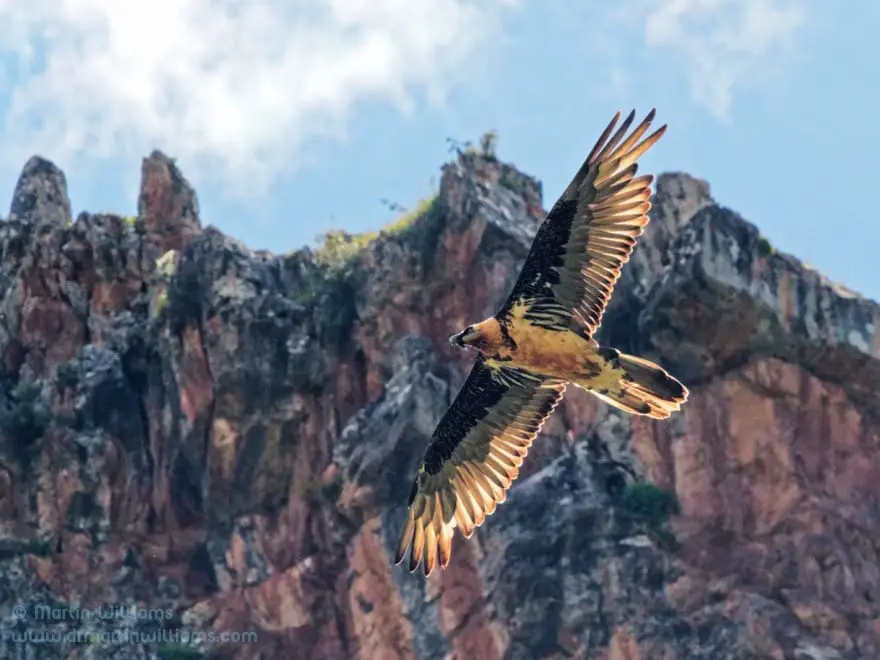
Lammergeiers – vultures with wingspans up to 2.5 metres, with mineral tinted rusty underparts – sometimes cruise over mountainsides, seeking bones they can break into fragments, then dissolve in powerful stomach acids to help digest the marrow.
Snow Leopard! Snow Leopard!
We again head up by this tributary on our third and last morning in the Valley of the Cats. The driver and I climb a little up a hillside that’s still cold and in shadow, to check a vantage he says is a good snow leopard watchpoint. He peers at the mountainside opposite, then shouts excitedly, “Xue Bao! Xue Bao!” (“Snow leopard! Snow leopard!”)
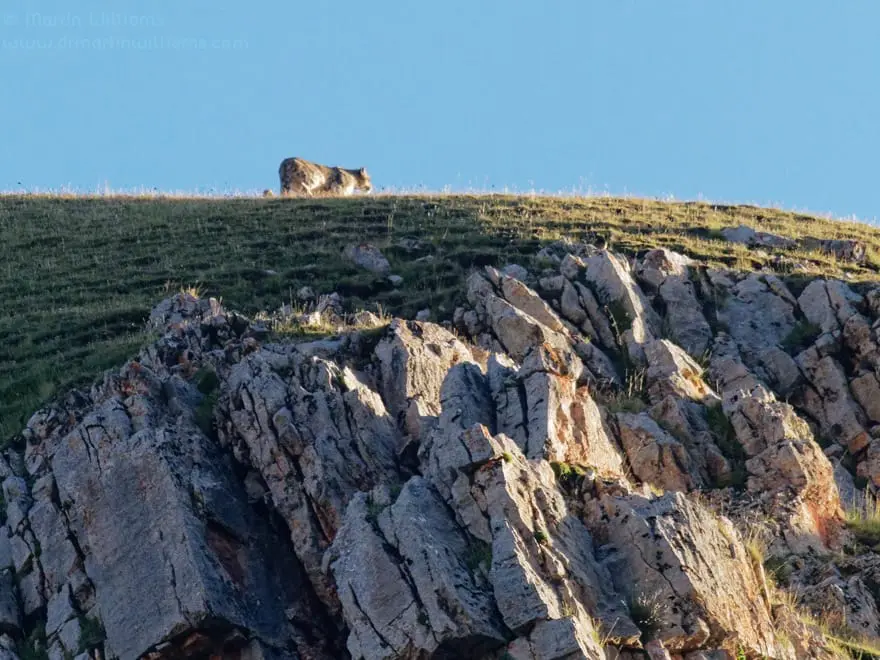
I look, notice only the grassy ridge, then I see it – a snow leopard silhouetted against the sky, lit by the rising sun. It strolls serenely, regal as a lion on the savannah. Then it’s lost from view.
We spend over six hours at the vantage, watching in vain for the snow leopard’s return, until deciding to explore the lower valley. And the next day, our host family waves goodbye, as we tear ourselves away from the magical, otherworldly Valley of the Cats.








































